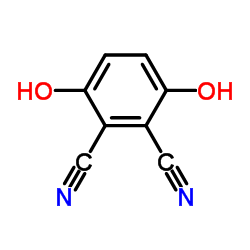Natural-cause mortality and long-term exposure to particle components: an analysis of 19 European cohorts within the multi-center ESCAPE project.
Rob Beelen, Gerard Hoek, Ole Raaschou-Nielsen, Massimo Stafoggia, Zorana Jovanovic Andersen, Gudrun Weinmayr, Barbara Hoffmann, Kathrin Wolf, Evangelia Samoli, Paul H Fischer, Mark J Nieuwenhuijsen, Wei W Xun, Klea Katsouyanni, Konstantina Dimakopoulou, Alessandro Marcon, Erkki Vartiainen, Timo Lanki, Tarja Yli-Tuomi, Bente Oftedal, Per E Schwarze, Per Nafstad, Ulf De Faire, Nancy L Pedersen, Claes-Göran Östenson, Laura Fratiglioni, Johanna Penell, Michal Korek, Göran Pershagen, Kirsten Thorup Eriksen, Kim Overvad, Mette Sørensen, Marloes Eeftens, Petra H Peeters, Kees Meliefste, Meng Wang, H Bas Bueno-de-Mesquita, Dorothea Sugiri, Ursula Krämer, Joachim Heinrich, Kees de Hoogh, Timothy Key, Annette Peters, Regina Hampel, Hans Concin, Gabriele Nagel, Andrea Jaensch, Alex Ineichen, Ming-Yi Tsai, Emmanuel Schaffner, Nicole M Probst-Hensch, Christian Schindler, Martina S Ragettli, Alice Vilier, Françoise Clavel-Chapelon, Christophe Declercq, Fulvio Ricceri, Carlotta Sacerdote, Claudia Galassi, Enrica Migliore, Andrea Ranzi, Giulia Cesaroni, Chiara Badaloni, Francesco Forastiere, Michail Katsoulis, Antonia Trichopoulou, Menno Keuken, Aleksandra Jedynska, Ingeborg M Kooter, Jaakko Kukkonen, Ranjeet S Sokhi, Paolo Vineis, Bert Brunekreef
Index: Environ. Health Perspect. 123 , 525-33, (2015)
Full Text: HTML
Abstract
Studies have shown associations between mortality and long-term exposure to particulate matter air pollution. Few cohort studies have estimated the effects of the elemental composition of particulate matter on mortality.Our aim was to study the association between natural-cause mortality and long-term exposure to elemental components of particulate matter.Mortality and confounder data from 19 European cohort studies were used. Residential exposure to eight a priori-selected components of particulate matter (PM) was characterized following a strictly standardized protocol. Annual average concentrations of copper, iron, potassium, nickel, sulfur, silicon, vanadium, and zinc within PM size fractions ≤ 2.5 μm (PM2.5) and ≤ 10 μm (PM10) were estimated using land-use regression models. Cohort-specific statistical analyses of the associations between mortality and air pollution were conducted using Cox proportional hazards models using a common protocol followed by meta-analysis.The total study population consisted of 291,816 participants, of whom 25,466 died from a natural cause during follow-up (average time of follow-up, 14.3 years). Hazard ratios were positive for almost all elements and statistically significant for PM2.5 sulfur (1.14; 95% CI: 1.06, 1.23 per 200 ng/m3). In a two-pollutant model, the association with PM2.5 sulfur was robust to adjustment for PM2.5 mass, whereas the association with PM2.5 mass was reduced.Long-term exposure to PM2.5 sulfur was associated with natural-cause mortality. This association was robust to adjustment for other pollutants and PM2.5.
Related Compounds
| Structure | Name/CAS No. | Molecular Formula | Articles |
|---|---|---|---|
 |
2,3-Dicyanohydroquinone
CAS:4733-50-0 |
C8H4N2O2 |
|
Fluorescence emissions of imide compounds and end-capped pol...
2015-11-11 [Phys. Chem. Chem. Phys. 17 , 30659-69, (2015)] |
|
Sub-50 nm metrology on extreme ultra violet chemically ampli...
2015-10-01 [Rev. Sci. Instrum. 86 , 103702, (2015)] |
|
Flow cytometric measurement of cytoplasmic pH: a critical ev...
1986-07-01 [Cytometry 7(4) , 347-55, (1986)] |
|
Ratiometric measurement of intracellular pH in cultured huma...
1991-01-01 [Cytometry 12(2) , 127-32, (1991)] |
|
Measurement of intracellular pH.
1990-01-01 [Methods Cell Biol. 33 , 59-69, (1990)] |